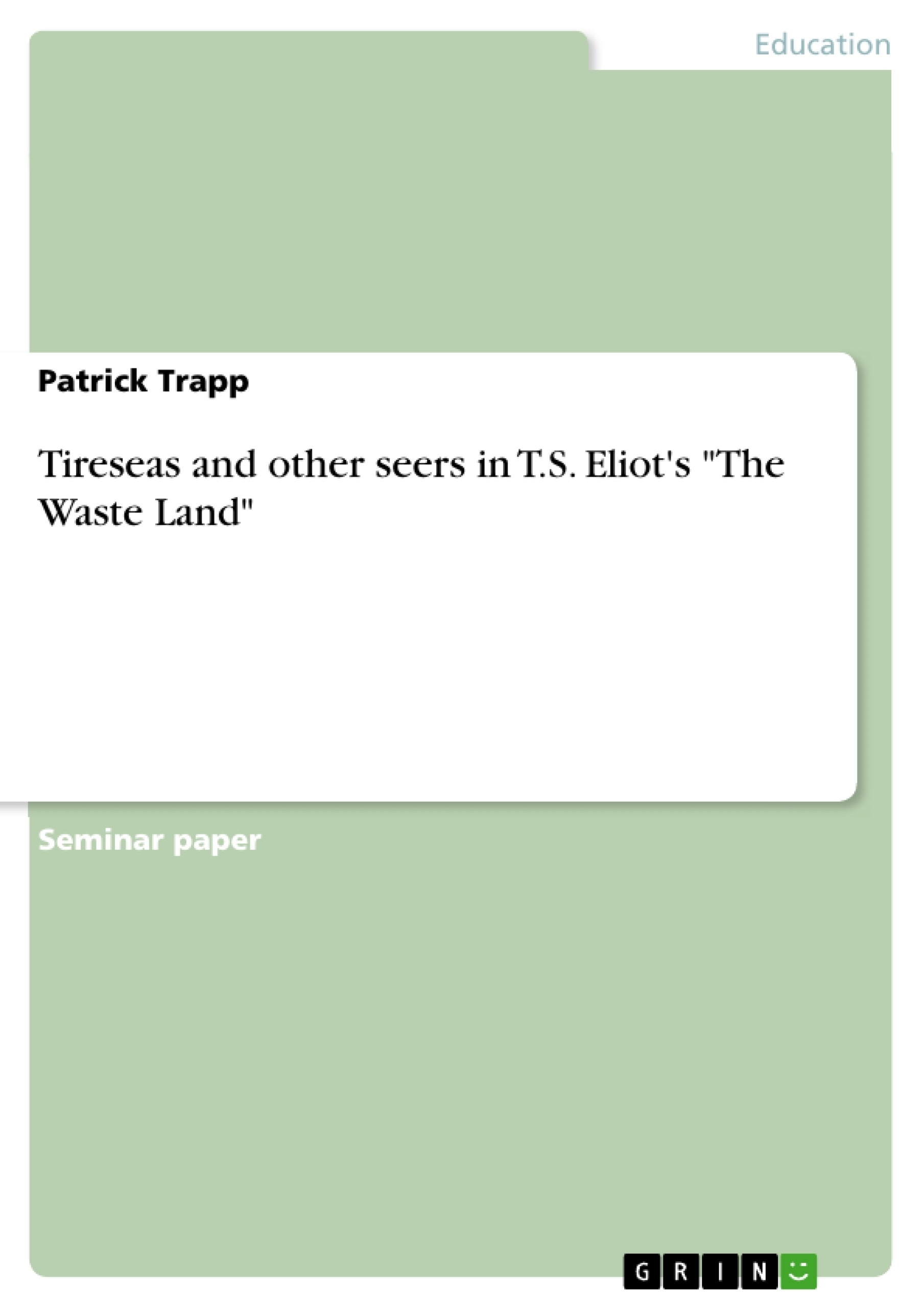Modernist writers like Ezra Pound or James Joyce often wrote in fragmented style, used allusions instead of metaphors and broke with traditional verse and turned away from classical poetry. In many cases they did not use classical metaphors but rather wrote in allusions, which refer to something in a more indirect way than traditional images do. With their literature and style they tried to criticize modern society. Among these authors, T.S. Eliot is one of the most important modernist writers. “The Waste Land has come to be regarded as one of the chief exemplars of modernism in English literature.” (Reeves 1994: 3) According to this Eliot’s poem can be seen as a typical example of modern poetry.
In his long poem The Waste Land the author refers to a number of mythological images and stories. These are presented in fragments but make sense and seem to be well structured when one analyzes them deeper after several close readings and analyses. One of the most important personages in his poem is the blind seer Tireseas.
In his Notes to The Waste Land, T.S. Eliot points out that “[w]hat Tireseas sees, in fact, is the substance of the poem” (1971: p. 148). This substance of the poem, which was first published in 1922, is to be analyzed in this term paper. Tireseas, a blind seer, who appears in ancient Greek literature in the Theban Plays by Sophocles and in Roman literature in the Metamorphosis by Ovid, is used as a reflex of the author’s voice foreseeing human failures without being able to change them. In Greek mythology, especially in Sophocles’ Antigone, he appears as a reminder of traditions.
Inhaltsverzeichnis (Table of Contents)
- Introduction
- The origin of the three seers
- Sybil of Cumae in Ovid's Metamorphosis and in Petronius' Satyricon
- Tireseas in Ovid's Metamorphosis and in Sophocles' The Three Theban Plays
- Madame Sosostris
- The use of stories from antiquity in modernists' writing and in T.S. Eliot's The Waste Land
- Foreseeing in The Waste Land
- Preface to the poem
- Madame Sosostris in The Waste Land
- The Tireseas figure in the poem
- Foreseeing in The Waste Land
Zielsetzung und Themenschwerpunkte (Objectives and Key Themes)
This term paper aims to analyze the role of the blind seer Tireseas in T.S. Eliot's long poem The Waste Land. The paper will examine how Tireseas' presence in the poem contributes to the broader themes of alienation, disillusionment, and the fragmentation of modern society.
- The influence of classical mythology on modernist literature.
- The use of allusions and fragmented style in modernist poetry.
- The role of seers and prophecy in T.S. Eliot's The Waste Land.
- The connection between ancient myths and modern society.
- The themes of alienation and disillusionment in modernist literature.
Zusammenfassung der Kapitel (Chapter Summaries)
- Introduction: This chapter introduces the topic of the term paper, focusing on the significance of Tireseas in T.S. Eliot's The Waste Land. It discusses the use of allusions and fragmented style in modernist poetry and highlights the importance of analyzing the poem's mythological references.
- The origin of the three seers: This chapter explores the origins of three important seer figures in classical literature: the Sybil of Cumae, Tireseas, and Madame Sosostris. It examines their roles in works like Ovid's Metamorphosis, Sophocles' Theban Plays, and Aldous Huxley's Crome Yellow, providing context for their appearances in The Waste Land.
- The use of stories from antiquity in modernists' writing and in T.S. Eliot's The Waste Land: This chapter analyzes how modernist writers like T.S. Eliot incorporated classical myths and stories into their work. It explores the significance of these allusions in shaping the themes and meaning of The Waste Land, specifically focusing on the role of foreseeing and the figure of Tireseas.
Schlüsselwörter (Keywords)
The key themes and concepts explored in this term paper include: modernism, T.S. Eliot, The Waste Land, Tireseas, Sybil of Cumae, Madame Sosostris, classical mythology, allusions, fragmented style, alienation, disillusionment, modern society.
- Quote paper
- Patrick Trapp (Author), 2006, Tireseas and other seers in T.S. Eliot's "The Waste Land", Munich, GRIN Verlag, https://www.hausarbeiten.de/document/161686



